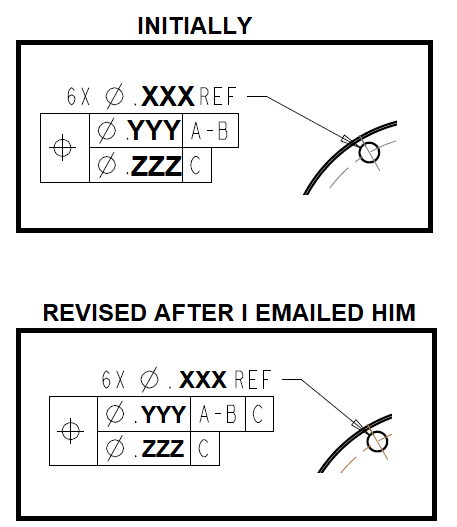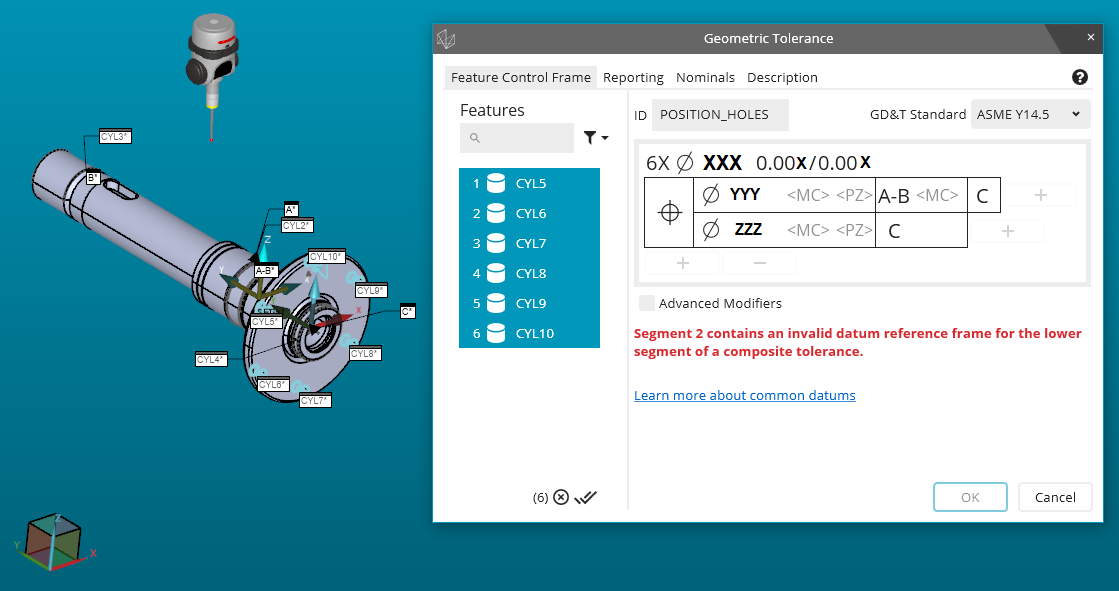Hey guys. I have a part with a composite position tolerance called out on a hole pattern. Initially the lower segment had a datum that was not in the upper segment and PC-dmis wouldn't allow me to inspect. I told the customer the rule was that "Each datum reference frame must only use the same datums as the reference frame above it" and sent him the below screen shot of the pc-dmis help page. He revised it but it still wont let me check. I am thinking the reason is the rule that "the datums must be in the same order" but it doesn't really make sense to me. Is it saying that if you remove a datum from the lower segment of the composite position it must come off the end and not the front? I don't want to tell this customer to revise his drawing again unless I am certain that's the reason. Thank you.



